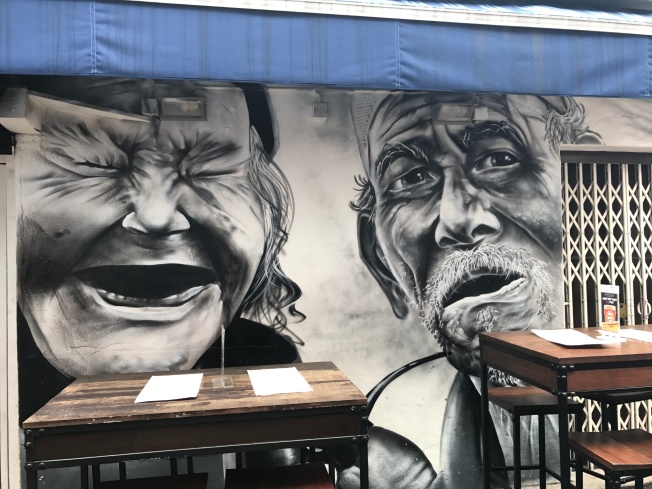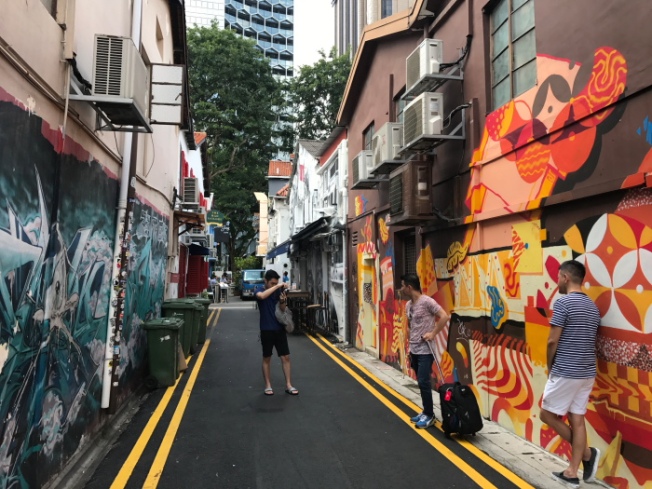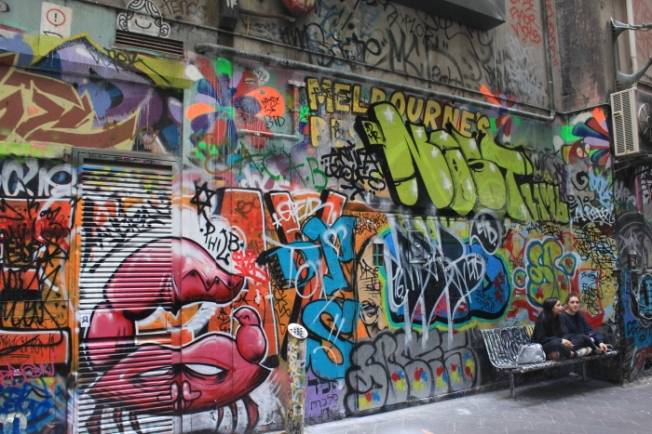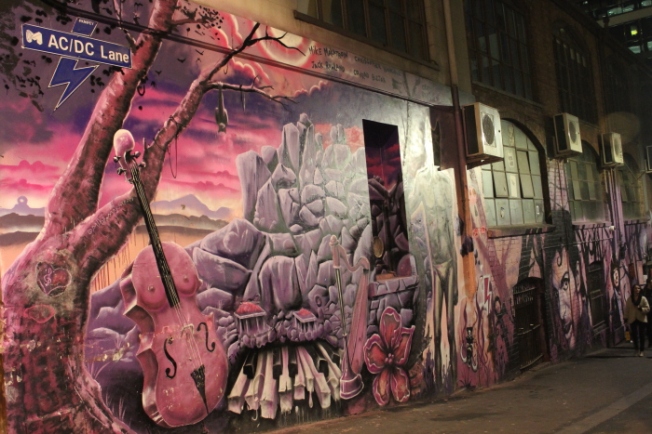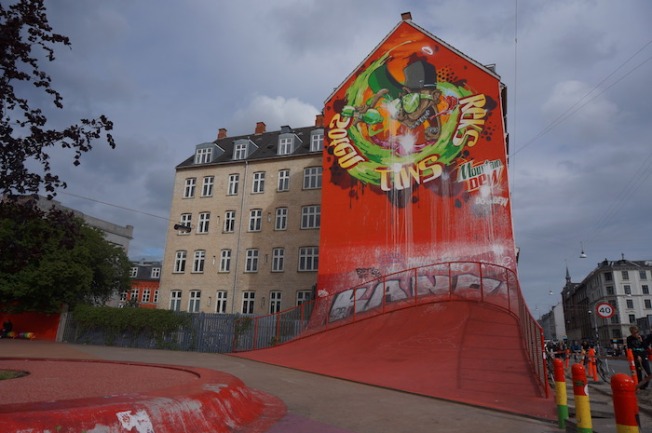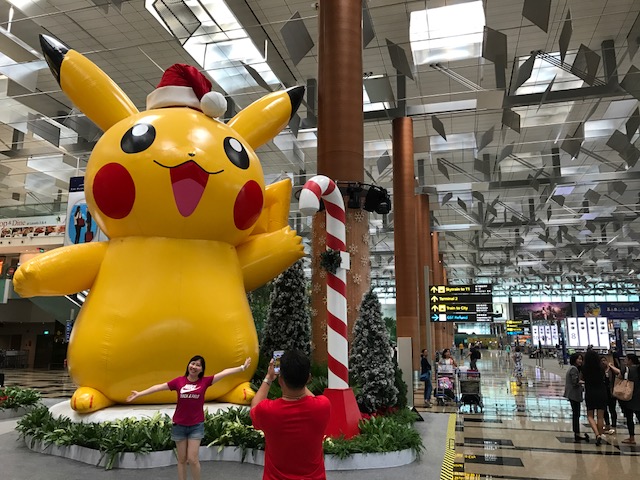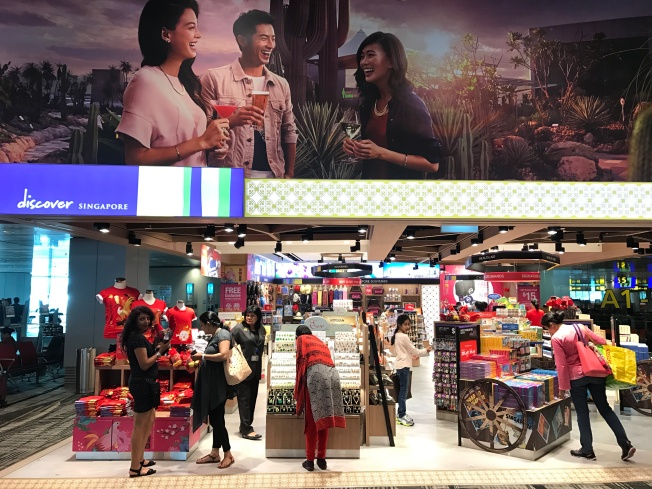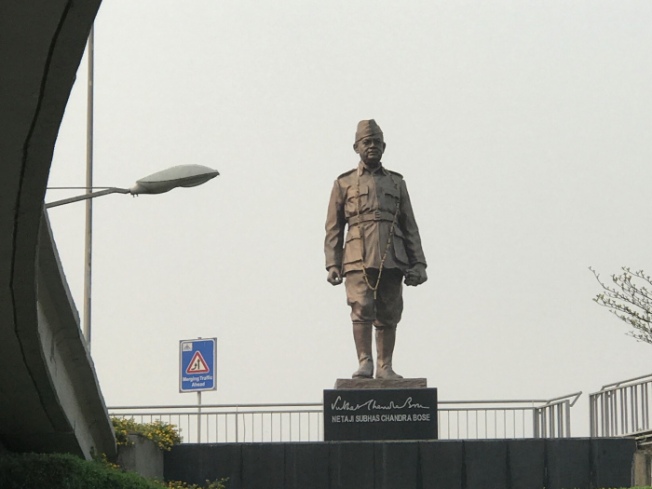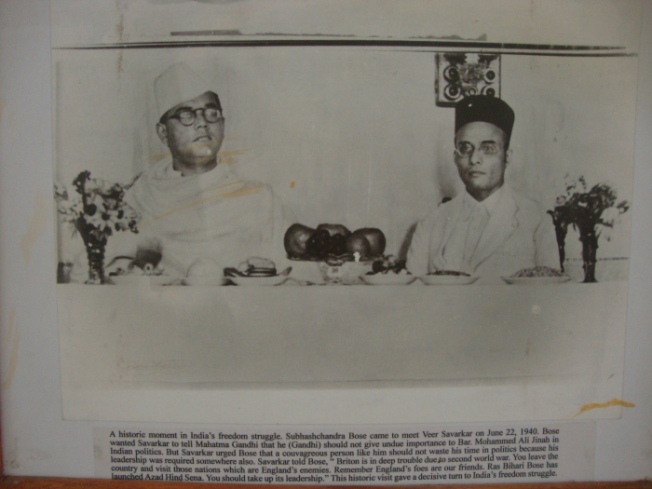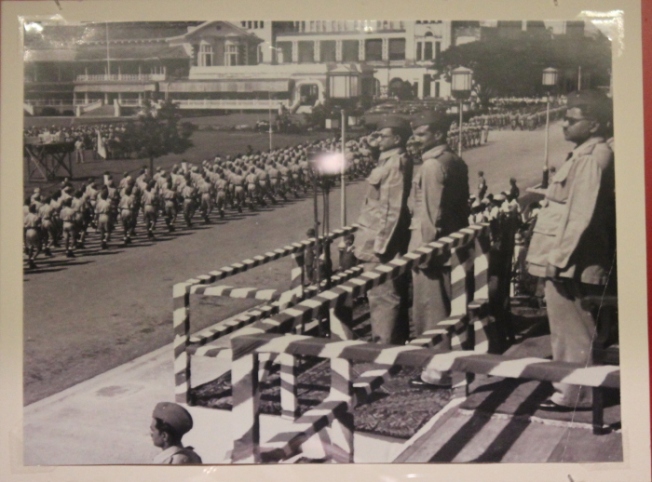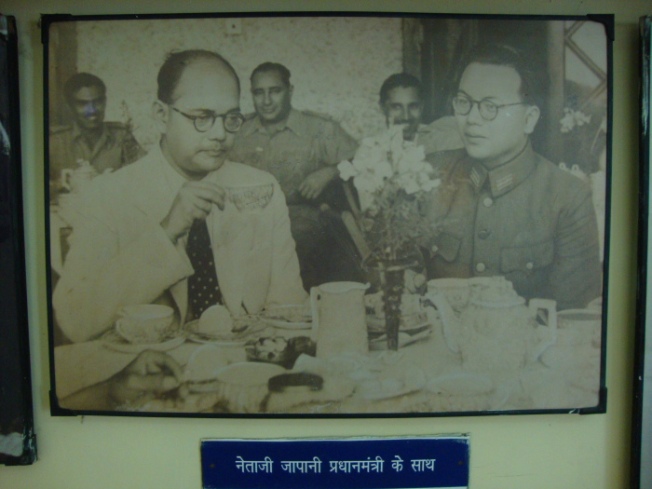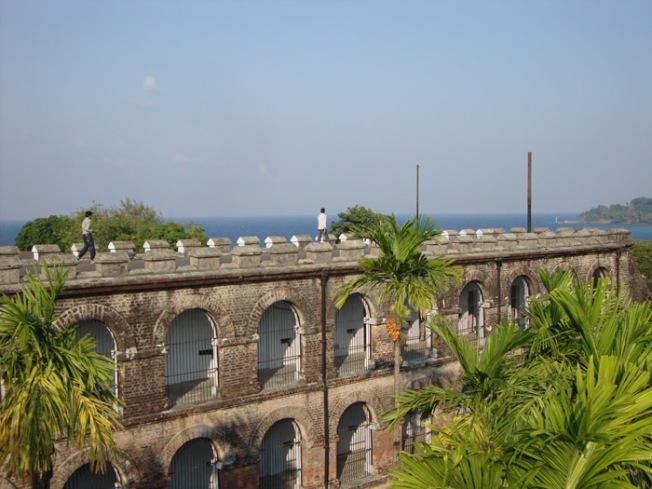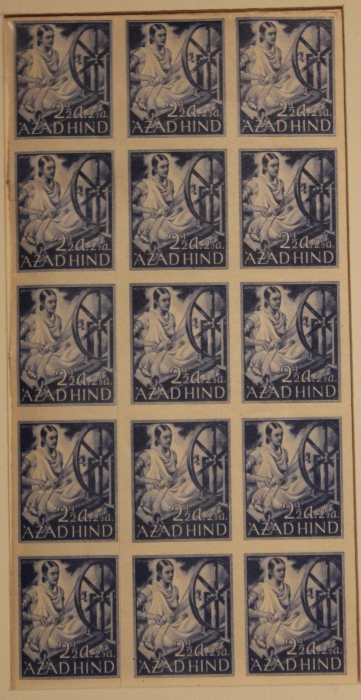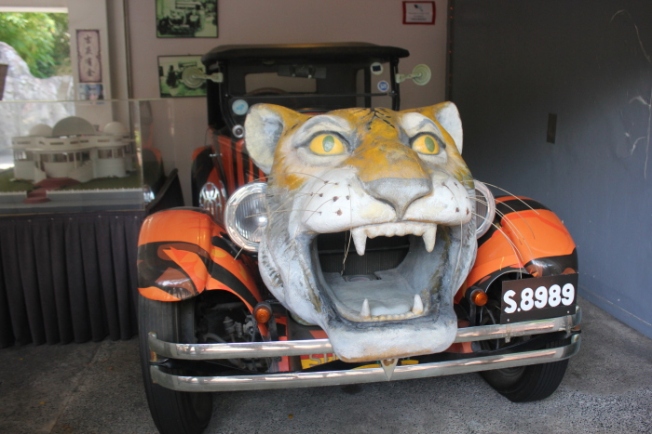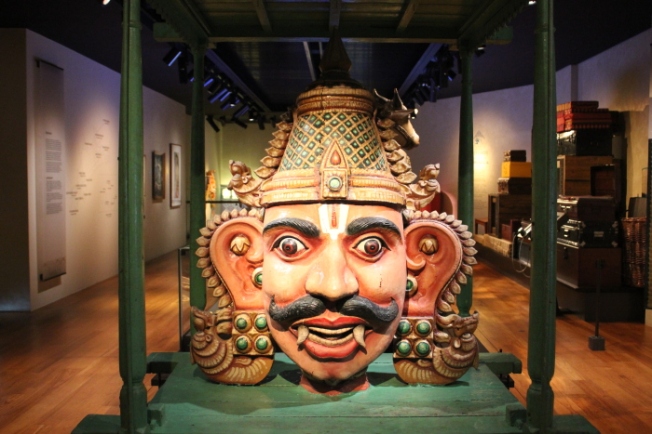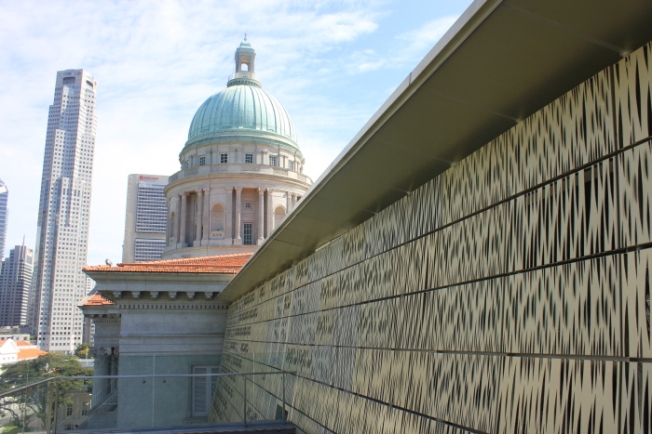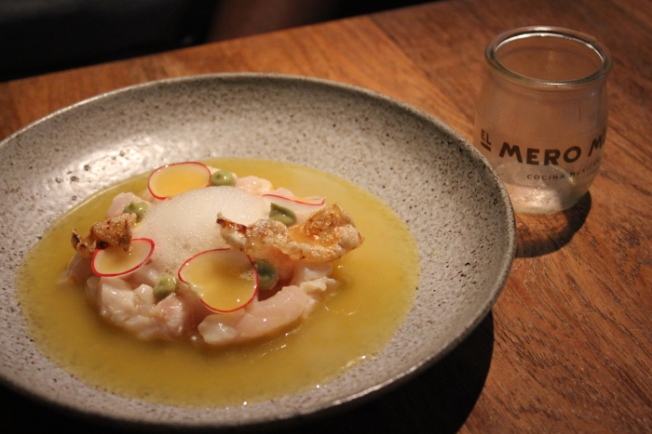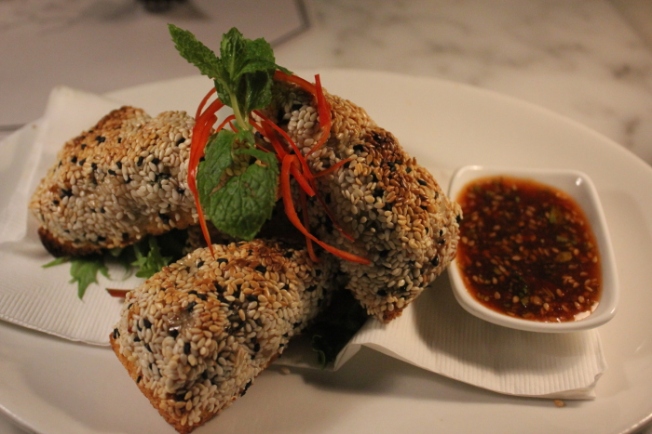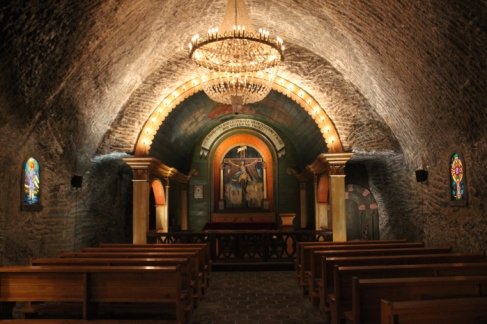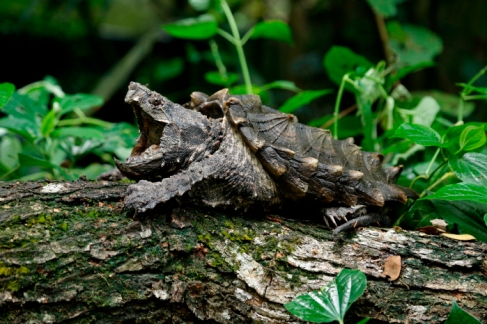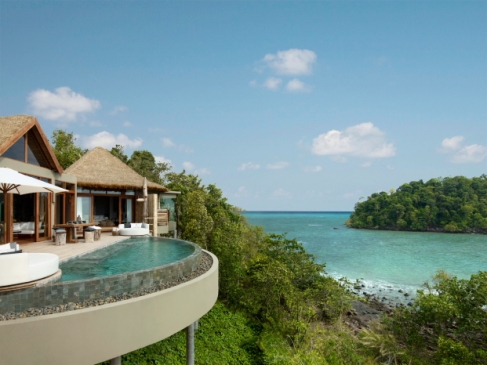ANURAG MALLICK and PRIYA GANAPATHY give a round up of this year’s Bicentennial celebrations in Singapore for Explorers, Foodies, Socialisers and Action Seekers

In India’s Best Awards 2018, readers of T+L India & South Asia voted in big numbers for Singapore and its attractions. Not only did the country clinch the title of the Best International Family Destination, but Changi Airport also won the Best International Airport, Singapore Airlines was adjudged Best International Airline and Universal Studios Singapore and Resorts World Sentosa (RWS) grabbed trophies for the best Amusement Park and Integrated Resort respectively.
Long favoured by travellers from India, Singapore constantly evolves and reinvents itself for travellers of all ages and tastes. So whether you are an explorer or a foodie, an action seeker or a social butterfly, 2019 is the year to visit Singapore with mega events lined up to commemorate its bicentennial milestone.

Explorers
Despite its diminutive size, there’s lots to explore in Singapore. Navigate through Changi Airport and discover why it is repeatedly voted the world’s best airport, with its delightful zones, Butterfly Garden, Orchid Garden and Cactus Garden. Feel like an adventurer at the Botanical Gardens, Jurong Bird Park, Singapore Zoo, River Safari (Asia’s first river-themed wildlife park) as you go on the world’s first Night Safari.
Take a heritage walk of Chinatown, Little India, Kampong Glam and Fort Canning or hike off the beaten path and do a canopy walk above trees at MacRitchie Reservoir. Discover hidden gems and vibrant street art as you explore charming neighbourhoods – Bugis-Bras Basah, the colourful shophouses in Haji Lane and Peranakan houses. At the Indian Heritage Centre trace the cultural transfusion in Southeast Asia through waves of migration between 1st-21st centuries.

A new experiential showcase at Fort Canning tells the stories of Singapore’s early settlers and communities through historic trails with projection installations at Telok Ayer Street and augmented reality trails of the Singapore River and Fort Canning Park. Take a Battlebox tour of the 1930s underground bombproof chamber, the headquarters of the Malaya Command during World War II.
On 15 February, 1942 the decision to surrender Singapore to the Japanese was taken here by the British. Continue on the history trail to Fort Siloso, Singapore’s only preserved coastal fort. A lift rises 36.3m high to a viewing deck and the 200m long walkway snakes above the canopy with stunning views of the sea, ending at gun placements and the WWII Surrender Chamber.

For the explorer in you, Singapore has several museums –Philately Museum, Peranakan Museum, Changi Museum, Malay Heritage Centre, ArtScience Museum, Asian Civilizations Museum, National Museum of Singapore, Singapore City Gallery and the Lee Kong Chian Natural History Museum.
Trace the history of life on earth across 500,000 animal and plant specimens ranging from the world’s largest crab (Japanese Spider Crab) to the smallest (Coral Spider Crab), three dinosaurs from America (Prince, Apollonia and Twinky) and a 10.6m female sperm whale ‘Jubi Lee’ that washed ashore in Singapore in 2015. The dinosaur zone runs a Light Show every half-hour all day. And something new to look forward to each month…
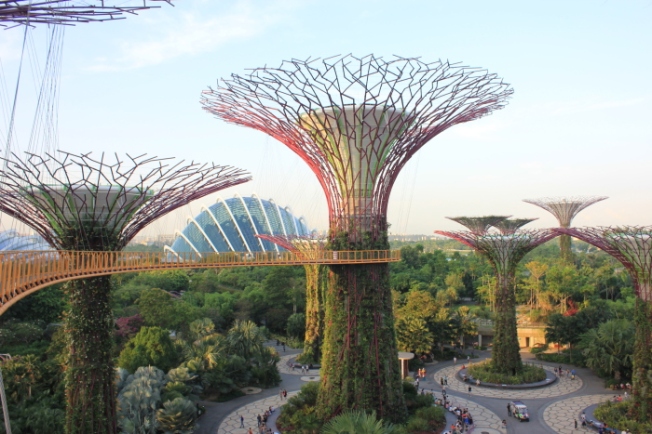
i Light Singapore – March
The bright lights of Singapore get brighter with the bicentennial edition of the sustainable light art festival and the theme ‘Bridges of Time’. Every evening in March, stroll down Singapore’s iconic riverfront, Marina Bay, the Civic District and Fort Canning to appreciate interactive installations by local and international artists.
Singapore Festival of Fun – 8-18 March
10-day festival with dining and entertainment experiences, besides stand up acts at the old bustling port Clarke Quay, now a hip lifestyle district
Indian Culture Fiesta – April
Celebrate the diversity of Indian culture at Indian Cultural Fiesta – a showcase of traditions, rituals and arts of 16 ethnic associations from different parts of India.
Hari Raya light up – June
Marking the end of the holy month of Ramadan is the festival of Eid or Hari Raya Aidilfitri. Watch the streets of Geylang Serai, Singapore’s largest Malay enclave light up with displays inspired by Malay art and cultural icons.
Rainforest Lumina – June-Dec
As part of Singapore Zoo’s 45th anniversary celebrations, take a walk on the wild side. Uncover stories and sensory treasures of nature with a first-of-its-kind show in Southeast Asia – audio-visual experience at 10 interactive zones, 7:30 pm onwards.
Singapore Night Festival – Aug
For two weekends in August, SNF transforms the Bugis-Bras Basah heritage precinct into a themed midsummer celebration with interactive light installations and events at art and cultural institutions.
Mid-Autumn Light up – Sep
Marking the end of the autumn harvest, the thanksgiving festival sees beautiful lanterns bedecking Chinatown. Sample mooncakes and teas at the street bazaars, watch night performances and take part in lantern-painting competitions.
Deepavali – Nov
A major cultural highlight, join the Silver Chariot Procession held twice in the lead-up to Diwali from Chinatown to Little India. Visit the Indian Heritage Centre building inspired by the Indian baoli (stepwell) where tabs and Augmented Reality take story-telling to another level. Choose a pagri/topi for a selfie at the headgear section.
Christmas on a Great Street – Dec
The annual Christmas Wonderland at Gardens by the Bay is a highlight of Singapore’s exciting year-end celebrations, with carnival games and rides. Go shopping at Orchard Road, skate under the stars and watch gardens come alive with large-scale illuminations at night.

FACT FILE
What to Explore
The Original Singapore Walks
Ph +65 6325 1631 www.journeys.com.sg
Timings 9:30am, 2:30pm Guided tour S$38 Adults, S$18 children
National Gallery Singapore
Ph +65 6271 7000 www.nationalgallery.sg
Timings 10am-7pm (till 10 pm on Fri/Sat) Entry S$20 adults, S$15 children
Daily free guided art/architecture tours (20 slots) in English from Visitor Services Counter.
Lee Kong Chian Natural History Museum (LKCNHM)
Ph +65 6601 3333 nhmvisit@nus.edu.sg
Timings 10am-7pm Entry S$21 adults, S$13 children
Indian Heritage Centre, Little India
Ph +65 6291 1601 www.indianheritage.org.sg
Timings 10am-7pm Monday closed Entry S$4
Fort Siloso, Sentosa
Ph 1800 736 8672 www.sentosa.com.sg
Timings 10am-6pm Entry free, 90 min Guided Tour S$20 adults, S$14 children
Stay at the beach-facing Shangri-La’s Rasa Sentosa Resort and get a complimentary coupon!
The Battlebox, Fort Canning
Ph +65 6338 6133 www.battlebox.com.sg
Timings 9:45am-5pm Entry S$18-32

Foodies
For the serious foodie, there’s no better place than Singapore! Ten of the Top 50 restaurants in Asia can be found here. This is the birthplace of the Singapore chilli crab and the iconic Singapore Sling, a gin-based cocktail infused with Grenadine invented in 1912 at the Raffles Hotel. When the Americans came here after World War II, someone stuffed country sandwich bread with meat and eggs to create an Asian version of the Philly Cheese Steak sandwich – called Roti John! Ingenuity is in Singapore’s genes. Here, temperamental celebrity chefs meet their match with ordinary vendors in Street Food Challenges.
With limited space available, Singapore loves to repurpose the old and reinvent itself. Lau Pa Sat, once a Victorian era wet market, transforms into a pedestrian-only street food centre by evening. The erstwhile British cantonment Dempsey Hill is now a plush entertainment and F&B quarter. Ann Siang Hill, earlier a nutmeg and mace plantation, is now a vibrant precinct with rooftop bars and restaurants. CHIJMES, the 1841 Church of Infant Jesus was renovated from a religious complex to a modern restaurant complex and renamed after the peal of the church bells.
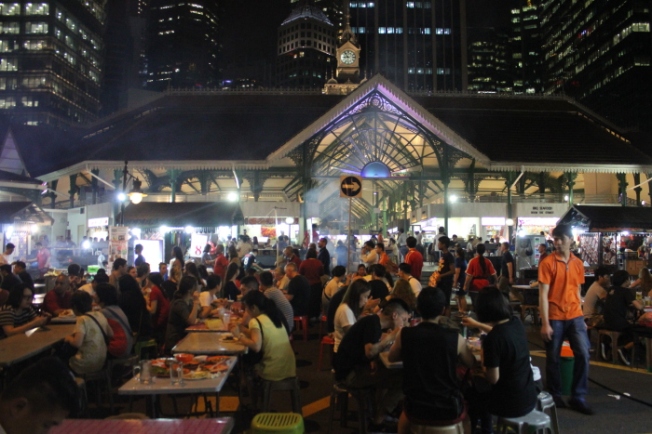
From legendary hawker centres to Michelin star restaurants, the sheer diversity of dining locations in Singapore is tantalizing. Discover the ‘City in a Garden’ as you dine at IndoChine in a SuperTree at Gardens by the Bay, enjoy the breezy outdoors at Satay by the Bay or opt for a 7-course degustation menu at Pollen inside the Flower Dome in a plush indoor setting. The 34-seater Gourmet Bus combines gourmet dining with sightseeing.
Changi ranks second after Hong Kong as the world’s best airport for dining with Singapore’s top street food icons found right inside. Straits Food Village, a 24 hr food court awarded Airport Food Court of the Year at the Airport Food and Beverage (FAB) Awards 2016 captures the classic hawker experience. This year, The World’s 50 Best Restaurants, hailed as ‘the Oscars of global gastronomy’ will be held in Singapore in a year packed with events.

World Gourmet Summit (WGS) – 2-4 April
Gourmet fare, fine wines and wonderful dining experiences mark Asia’s premier haute cuisine festival. The 23rd edition features top masterchefs and local culinary talents serving dinners, brunches, masterclasses and more.
Asia’s 50 Best Bars – May
An exciting showcase of the superlative and most innovative in the drinks industry, where foodies can sample bold award-winning concoctions and bar food. Check out cutting edge bars like Operation Dagger and Oxwell and Co at Ann Siang Hill, Dempsey Hill and Holland village.
The World’s 50 Best Restaurants – June
Hosted in Asia for the first time, the gala awards celebrate culinary innovation and diversity through bespoke dinners, interactive masterclasses and live discussions. Breeze through restaurants at Clarke Quay, CHJIMES and Orchard.
Hari Raya Light up – June
Spectacular light installations with traditional Malay icons all month long as a lead up to Hari Raya Aidilfitri. The atmospheric Geylang Serai bazaar is lined with hundreds of shops selling decorations, clothing and food, ranging from traditional to modern Muslim cuisine, cookies, cakes, deep-fried snacks and spicy meals.
Singapore Food Festival – July
The best of local cuisine and live music, explore the city through its traditional and contemporary food, with cultural tours, workshops and events across the island. SFF’s signature event STREAT is a weekend pop-up restaurant with Singapore’s top chefs serving a specially curated menu of modern Singaporean cuisine.
Deepavali – Oct
The annual Hindu festival of light is a good time to head to Little India to see locals dress up in new clothes to enjoy the bright lights. Foodies can try festive delicacies like murukku (savoury twists), athirasam (sweet doughnuts), laddus and Diwali sweets at the Deepavali Festival Village.
Wine Fiesta 2019 – Oct
Pair wine tasting with gourmet treats prepared by renowned chefs while sampling top wines from across the world in different styles, with expert classes by winemakers.
Singapore River Festival – Nov
A two-day extravaganza across Boat Quay, Robertson Quay and Clarke Quay; dine at discounted prices at eateries along the riverside. From smoky tandoori meats to seafood and funked up local fare like Chicken Rice Arancini with Sambal Aioli, nibble around in a festive atmosphere with lights, outdoor dance floors and art installations.
Christmas – Dec
All the action moves to Orchard Road with Yuletide delicacies at the Christmas Village, food pop-ups and seasonal Christmas delights.

Socialisers
Singapore’s heady world of bars, clubs and galleries is just the place for people who love to socialize. Brush shoulders with celebrity figures at Madame Tussauds and pop by at the National Gallery, the largest museum and visual arts venue in Singapore. With 8,000 artworks spread over 6,90,000 sq ft, it is the largest public collection of Singapore and Southeast Asian art in the world.
It is housed in two national monuments – the former Supreme Court Building and City Hall where Admiral Lord Mountbatten accepted the Japanese surrender on 12 September 1945. Beautifully restored with an award-winning glass-metal façade, explore its prison cells and Rotunda (round library) and survey the cityscape and historic padang (ground) from the terrace deck.
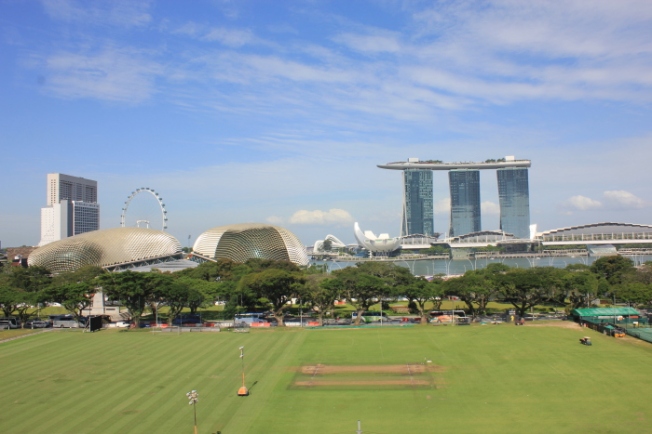
Rooftop bars, underground clubs, whiskey bars, hip speakeasies; you’ll find them all in Singapore at vibrant nightlife hotspots like Ann Siang Hill, Orchard, Dempsey Hill, Clarke Quay and Boat Quay. Try out cutting edge cocktails and ingenuity in mixology as you go club hopping from Attica to Altitude, the world’s highest alfresco bar on the 63rd floor of 1 Raffles Place.
At Bar Stories in Haji Lane, try Miss Joaquim, a cocktail inspired by Singapore’s national flower, the Vanda Miss Joaquim, made from ingredients of Chinatown where the flower was first propagated. At Ah Sam Cold Drink Stall, relish cocktails using distinctly Singaporean and Asian ingredients such as laksa leaves (savoury herb), coconut milk and gula melaka (palm sugar).
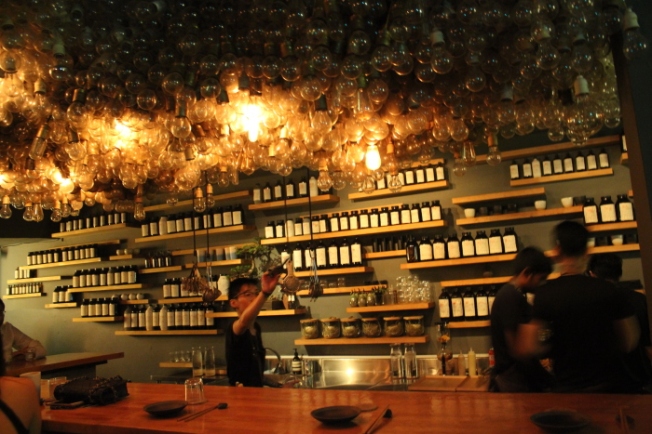
Live it up while staying at the most iconic hotels from Chinatown to Downtown – soak in the old world heritage of Fullerton or Raffles Hotel and relax in the world’s largest rooftop pool while looking over Singapore’s skyline at Marina Bay Sands.
From beach parties, outdoor concerts to festivals that celebrate diverse genres like club culture, Formula 1 racing, mixed martial arts, e-sports to Japanese anime, it’s a dizzying calendar building up to a crescendo in December.

Singapore International Jazz Festival – March
The perfect venue to immerse in a music-filled weekend with world-class music from classical jazz to legendary blues performances.
Singapore Cocktail Festival – May
Asia’s largest celebration of cocktails and an opportunity to interact with an international line-up of mixologists and savour artisanal spirits.
The Asia’s 50 Best Bars – May
Showcases and honours the best and most innovative talents in the drinks industry with a chance to sample their award-winning concoctions.
Ultra Singapore – June
An EDM festival over two days featuring top electronic, house and techno acts. Buzzing festival atmosphere, unparalleled stage design, top-notch production and a tribe of partygoers ready to groove from dusk to dawn.
The F1 Singapore Grand Prix – 13-22 Sep
Undoubtedly, the crown jewel of Singapore’s event calendar, the iconic FORMULA 1 night race revs up for its twelfth edition in 2019. Catch the best of Singapore’s vibrant lifestyle experiences – bigger parties, special menus and exciting retail promotions.
Wine Fiesta – Oct
Taste fine wines from across the world, expert-led classes and knowledge sharing by winemakers. Wine tastings are paired with specially curated gourmet fare.
Singapore River Festival – Oct
An immersive extravaganza along Boat Quay, Robertson Quay and Clarke Quay, appreciate numerous light and art installations, go party hopping while enjoying F&B promotions and outdoor discotheques.
C3 Anime Festival Asia – Dec
The eleventh edition promises to be the biggest, boldest Japanese pop culture event showcasing exciting Japanese anime, iconic characters, interesting comics, games and more. Dress up as your favourite anime character and mingle with fellow otakus (anime and manga geeks)
Zouk Out – 1-2 Dec
With 16 hours of epic EDM tunes, 30,000 guests and the world’s tops DJs, Asia’s largest dance music festival is back at Siloso beach. Organised by homegrown club Zouk, the 19th edition boasts international DJs as stages, bars and food stalls spread across the sprawling festival grounds. Get wowed by laser shows, pyrotechnics, back-to-back DJ sets and a cool Mambo Jambo beach party.
Marina Bay Singapore Countdown – Dec
Ring in the New Year at the iconic carnival in the heart of the city from early evening into the night. The Countdown party has an electric atmosphere with stunning visual displays and fireworks. Catch light projection shows at The Merlion statue, Fullerton Hotel and ArtScience Museum besides a Food Truck Fest.
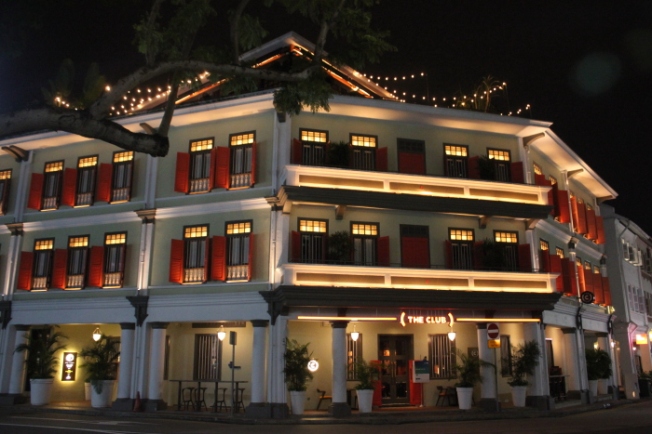
FACT FILE
Where to Stay
Marina Bay Sands Hotel
Ph +65 6688 8888 www.marinabaysands.com
Oasia Hotel Downtown
Ph +65 6664 0333 www.stayfareast.com
Shangri-La’s Rasa Sentosa
Ph +65 6275 0100 www.shangri-la.com
Crowne Plaza Changi
Ph +65 6823 5300 www.ihg.com
Singapore Marriott Tang Plaza Hotel, Orchard Road
Ph +65 6735 5800 www.marriott.com
Raffles Hotel
Ph +65 6337 1886 www.rafflessingapore.com/
The Fullerton Hotel Singapore
Ph +65 6733 8388 www.fullertonhotels.com
Sofitel So Singapore
Ph +65 6701 6800 www.sofitel-so-singapore.com/
Swissôtel Merchant Court
Ph +65 6239 1848 www.swissotel.com

Action-seekers
Singapore is a small dynamo buzzing with activities and adventures for any action seeker. Right at Changi Airport, whizz down 4 storeys of The Slide@T3, Singapore’s tallest slide and the world’s tallest slide in an airport. At Universal Studios, scream your lungs out and feel the rush of adrenalin at the hair-raising 4D Transformer, Battlestar Galactica and movie-inspired rides and roller coasters.
Get splashed at Adventure Cove waterpark, go on Segway rides, get face to face with marine creatures at S.E.A. Aquarium – the largest in the world, take the Skyline Luge – the first in South East Asia, tackle obstacle courses at Mega Adventure and zip down a 450m long zipline, experience the rush of indoor skydiving in the world’s first themed wind tunnel at i -Fly, try wave riding at Wave House Sentosa, brave spills and thrills at Sentosa 4D Adventureland, go gaming at Resorts World and enjoy the view from the revolving Tiger Sky Tower. Pause to catch your breath, for this is just Sentosa!

A great perch to see the city by night is the Singapore Flyer, which at 165m was the world’s tallest Ferris wheel until the High Roller of Las Vegas upstaged it in 2014. It’s still the largest observation wheel in Asia! While at the Flyer, try the new 737-800 flight simulator and sit in the captain’s seat of the world’s most popular jet airliner. Learn to take-off, cruise and land the plane at an airport of your choice in an immersive experience with real-size cockpits and aircraft controls. At the Flyer you could also reserve a pod for a private 3-course dinner.
Action seekers will love the various laser shows in Singapore – from Wings of Time (S$18, 7:40pm, 8:40pm) at Sentosa, WonderFull (8pm, 9:30pm) at Marina Bay Sands or Garden Rhapsody (7:45pm, 8:45pm) at the SuperTree grove in Gardens by the Bay; the latter two being free to public. From top-notch rugby and football to UFC fight nights and Grand Prix races, each event comes with its own entertainment package. So no matter when you choose to visit Singapore, there’s always some action at hand…

HSBC Singapore Rugby Sevens – 13-14 April
Watch the world’s best rugby teams tackle each other in an adrenalin-pumping encounter and a non-stop carnival atmosphere at Singapore Sports Hub
JSSL Singapore Professional Academy 7s 2019 – 19-21 April
Showcases top level football with football experts offering insights at the JSSL Singapore Football Coaching Convention.
UFC Fight Night Singapore – June
Witness top mixed martial arts athletes compete in the world’s most intimidating arena, the Octagon©. In the lead up to UFC Fight Night, activities like Open Workout will be held for the growing MMA fan base in the region.
International Champions Cup – July
A golden opportunity for football fans to catch their favourite clubs and players in action. Top teams from around the world play against each another in Singapore during the pre-season resulting in world-class football matches.
2019 Formula 1 Singapore Grand Prix – 20-22 Sep
Experience full-throttle high adrenaline action that comes in a gust of wind and speed. The twelfth edition of the iconic FORMULA 1 night race brings out the best of Singapore’s vibrant lifestyle experiences – wilder parties, special menus, retail discounts and performances by Fatboy Slim and Toots & the Maytals.
PVP eSports Championship – Oct
Online gaming fans and action seekers will enjoy the thrilling e-sports competition as teams from Singapore and the region compete for a prize pool of US$300,000.
Standard Chartered Marathon – Dec
The marquee running event on Singapore’s sporting calendar where thousands run past iconic landmarks. Explore the city and its pretty landscape while testing your endurance in a tropical climate.

FACT FILE
Getting there:
Singapore Airlines flies direct (around 4 hrs) from Bengaluru, Chennai and other cities to Changi Airport www.singaporeair.com
Changi Airport
https://in.changiairport.com
Flight Experience, Singapore Flyer
Ph +65 6339 2737, 1800 737 0800 www.flightexperience.com.sg
Timings 10am-10pm Entry S$175
Universal Studios, Sentosa
Ph +65 6577 8888 www.rwsentosa.com
Timings 10am-7pm Entry S$74 adults, S$56 children, VIP Tour Unlimited Access S$298
Singapore Grand Prix
Ph +65 6738 6738 www.singaporegp.sg
For more info, visit www.yoursingapore.com
Authors: Anurag Mallick & Priya Ganapathy. This article appeared as part of a special feature in the March 2019 issue of Travel + Leisure India magazine.
